Parque Botánico Río Medellín - Plan Maestro
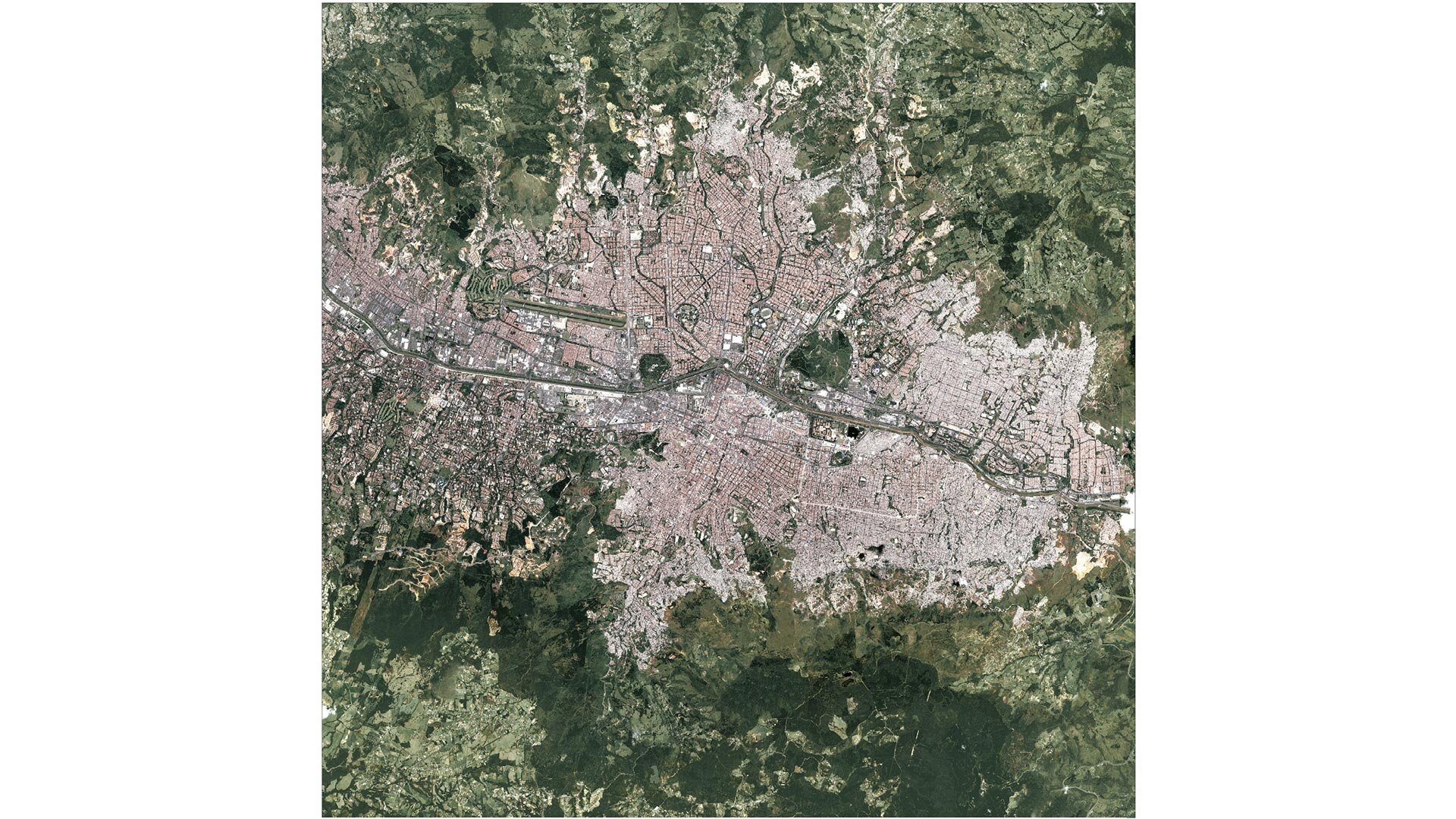
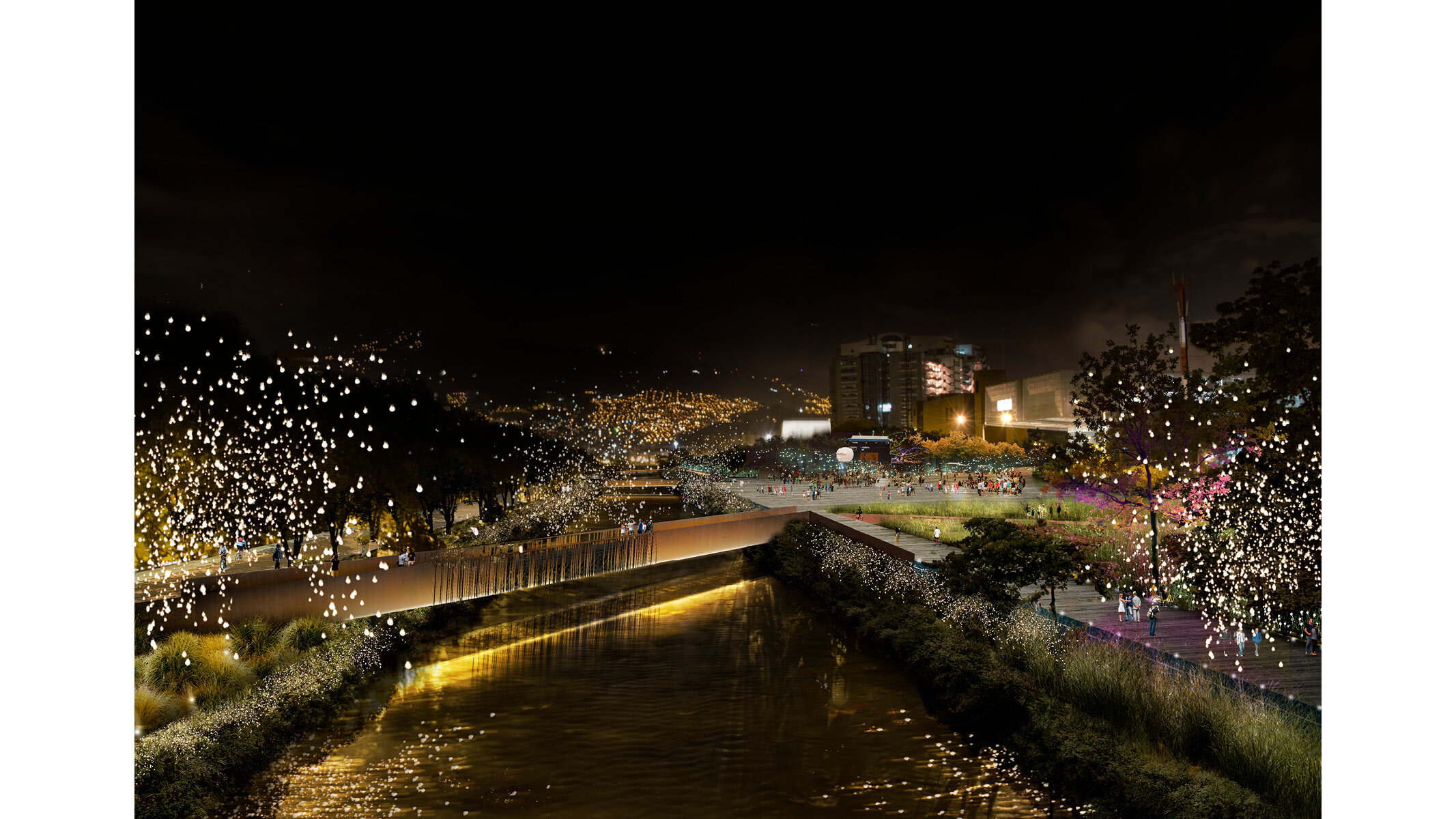
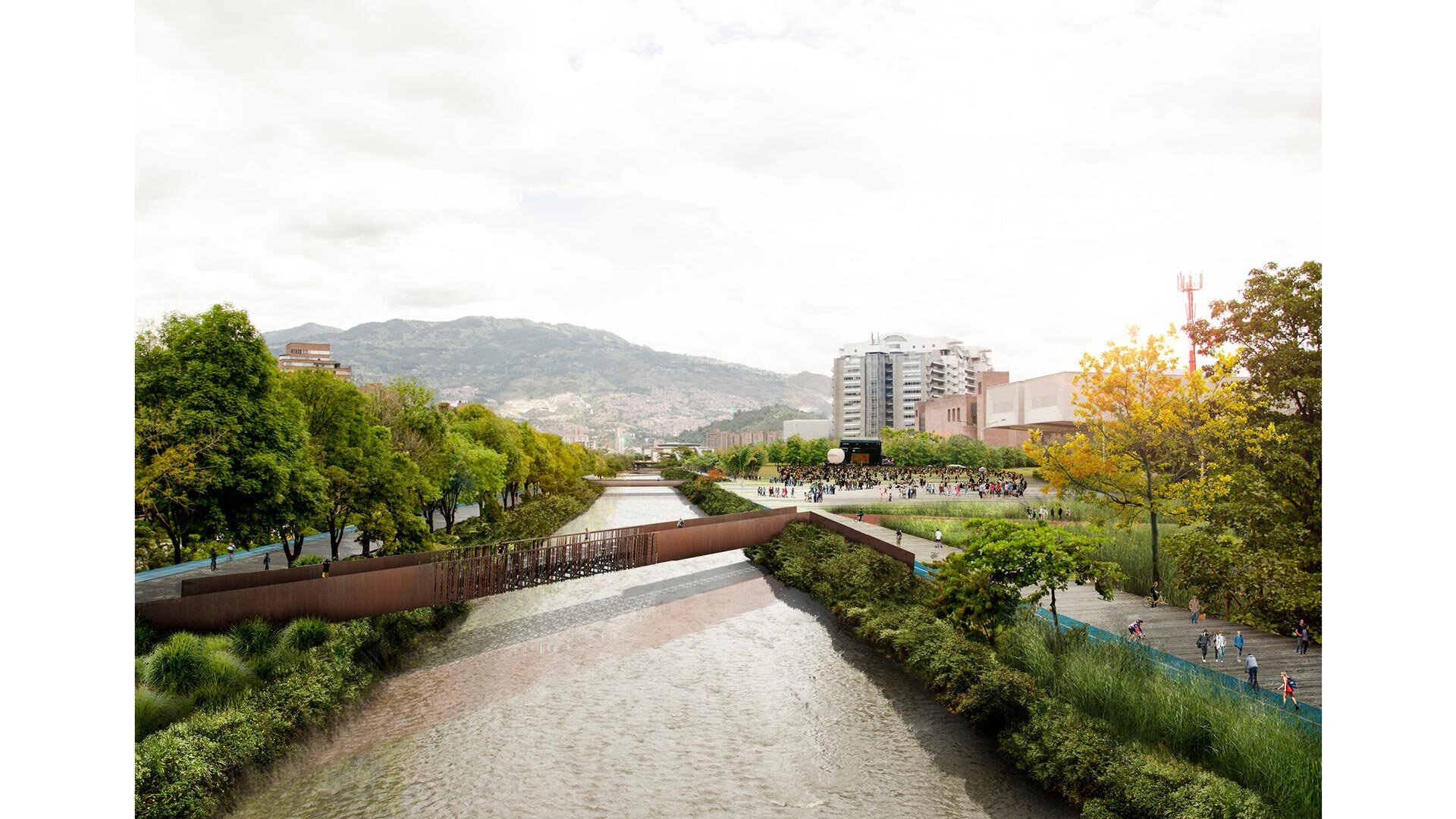
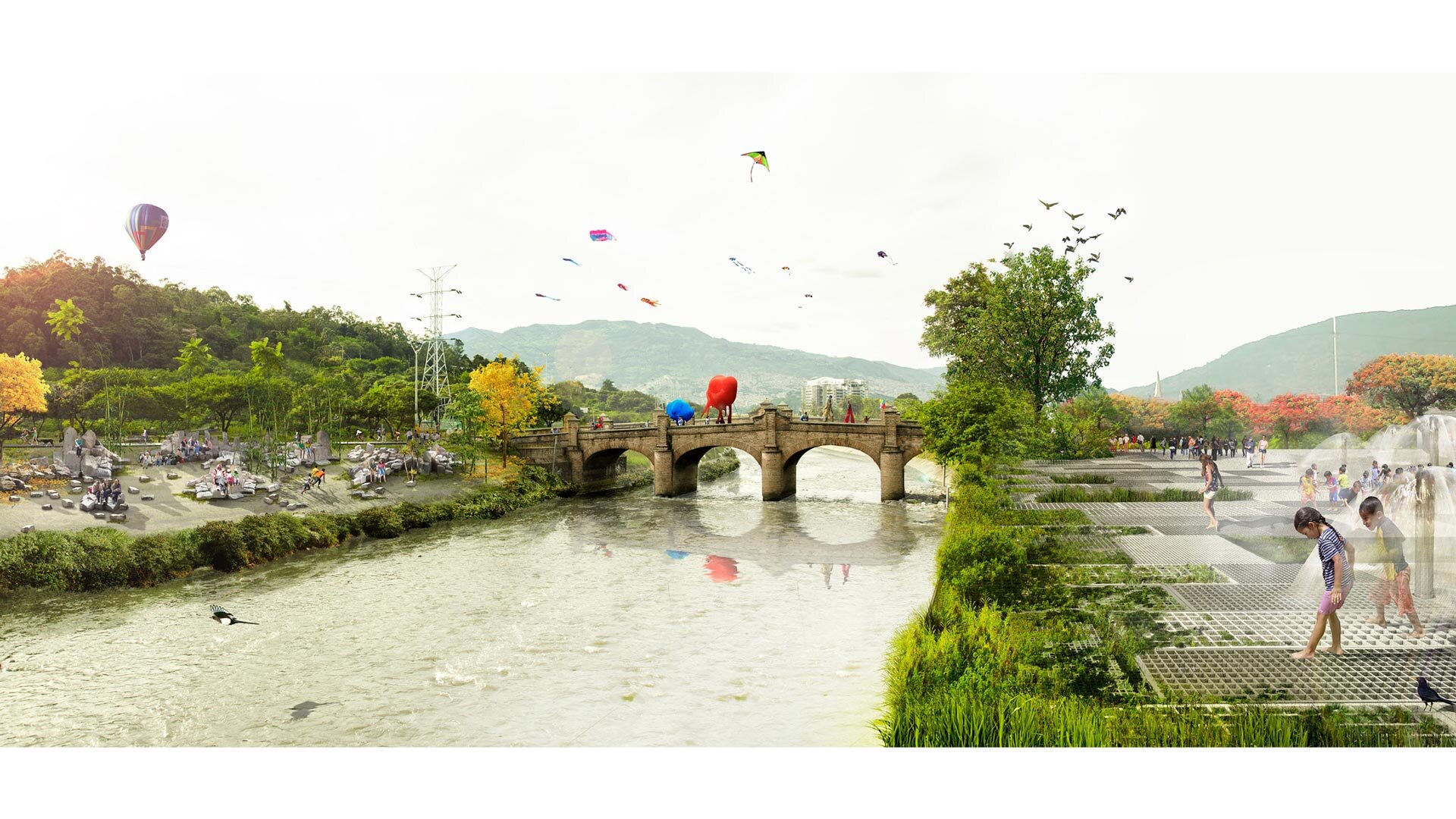
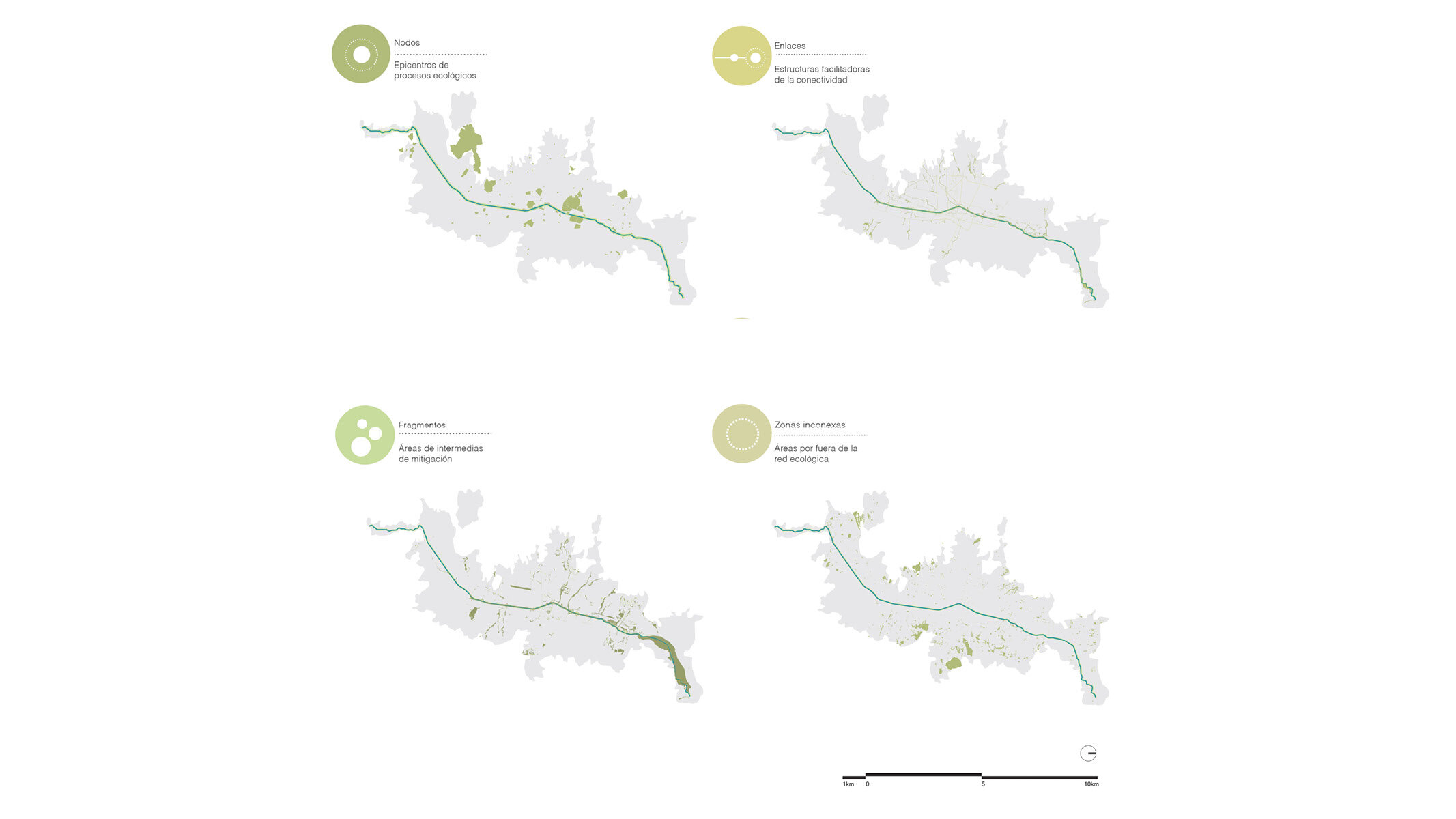
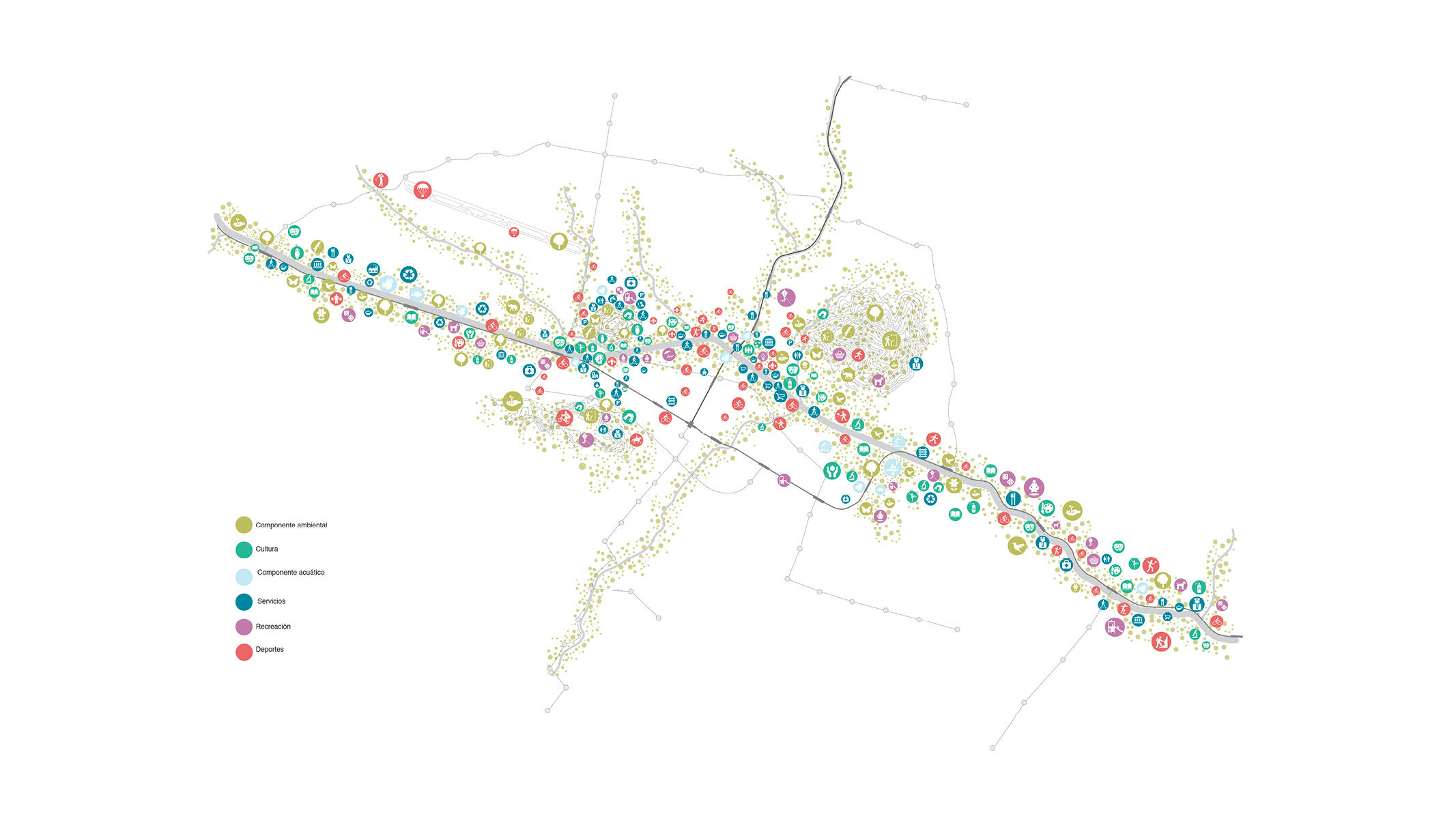
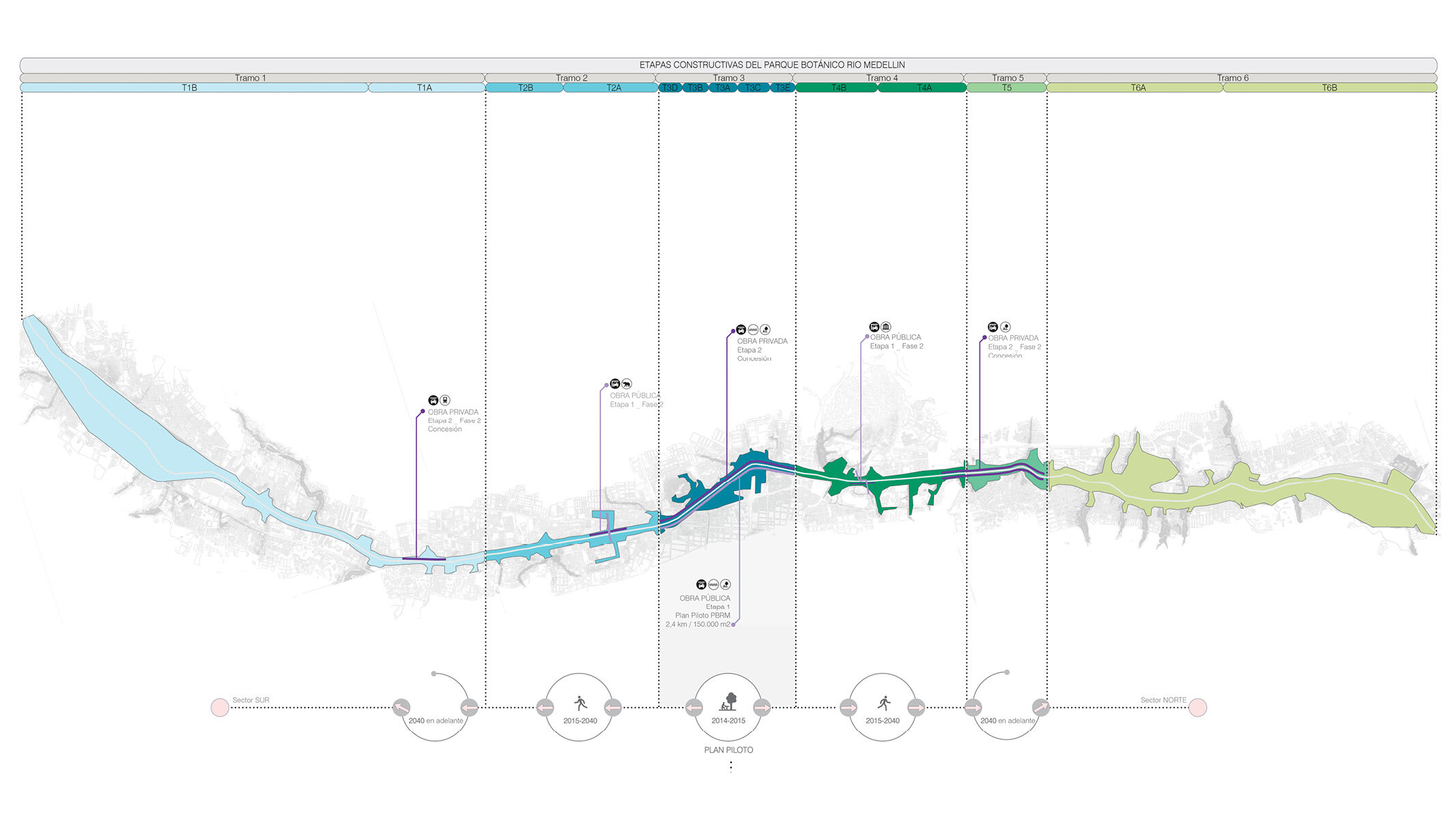
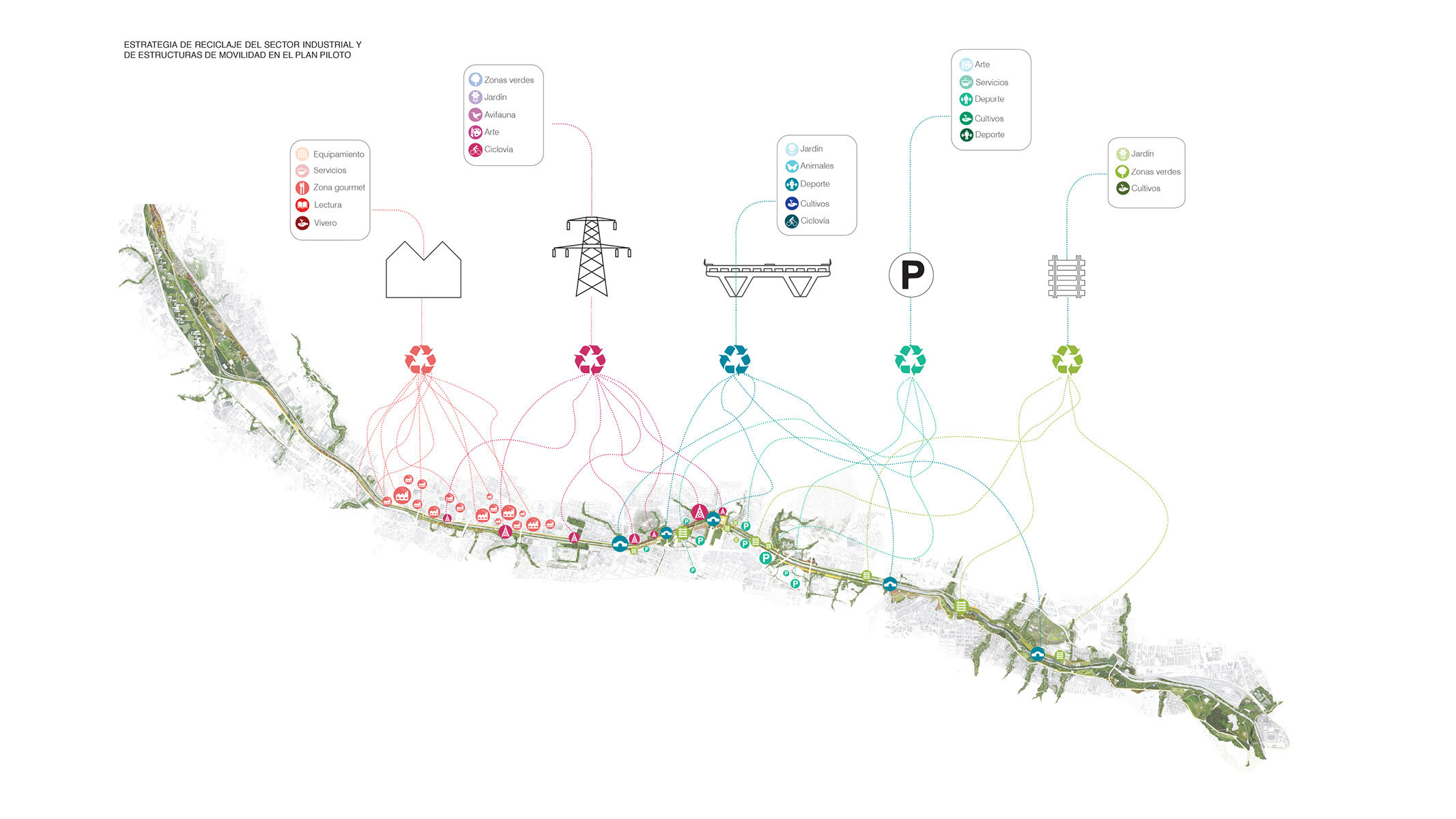
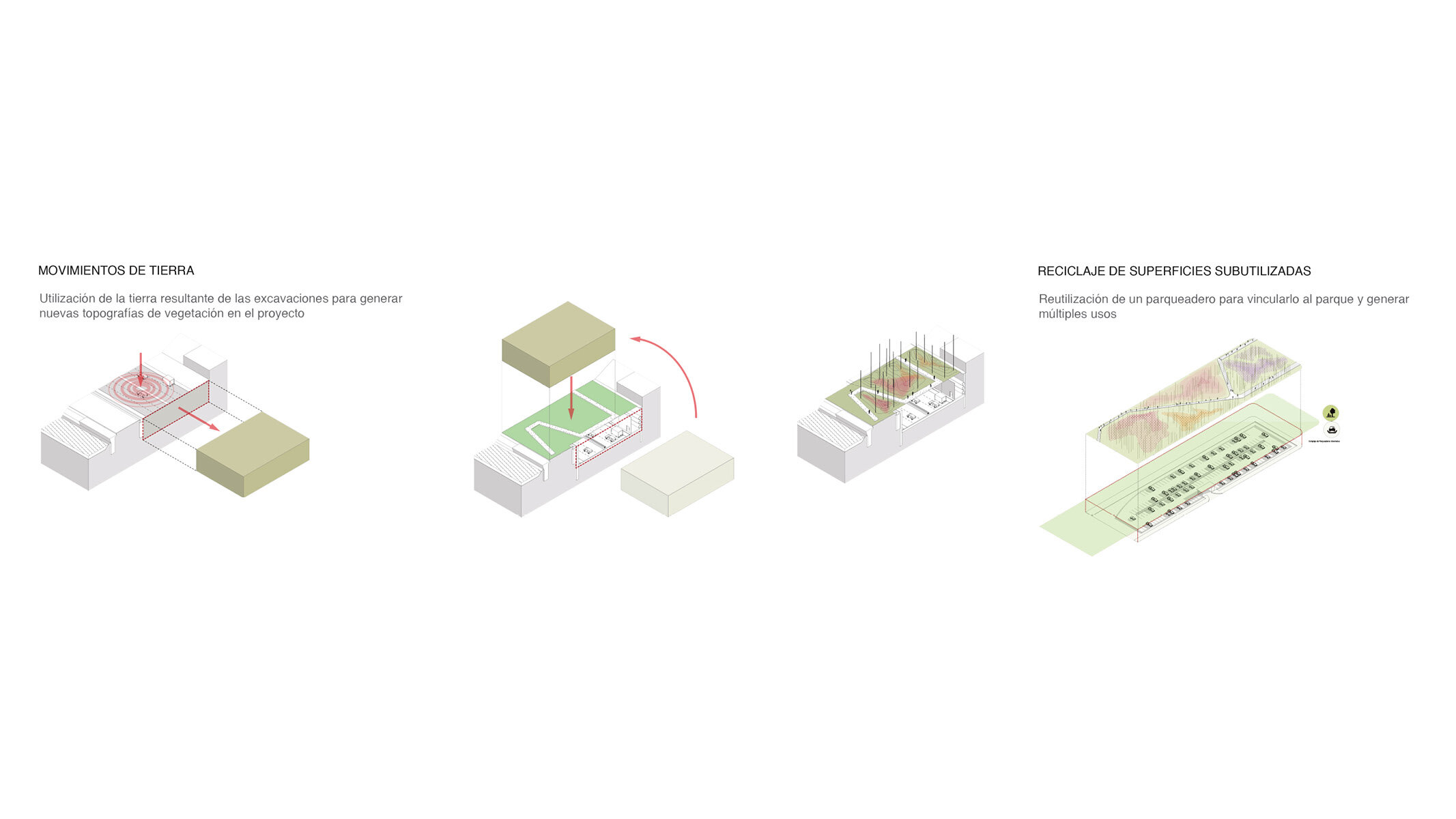
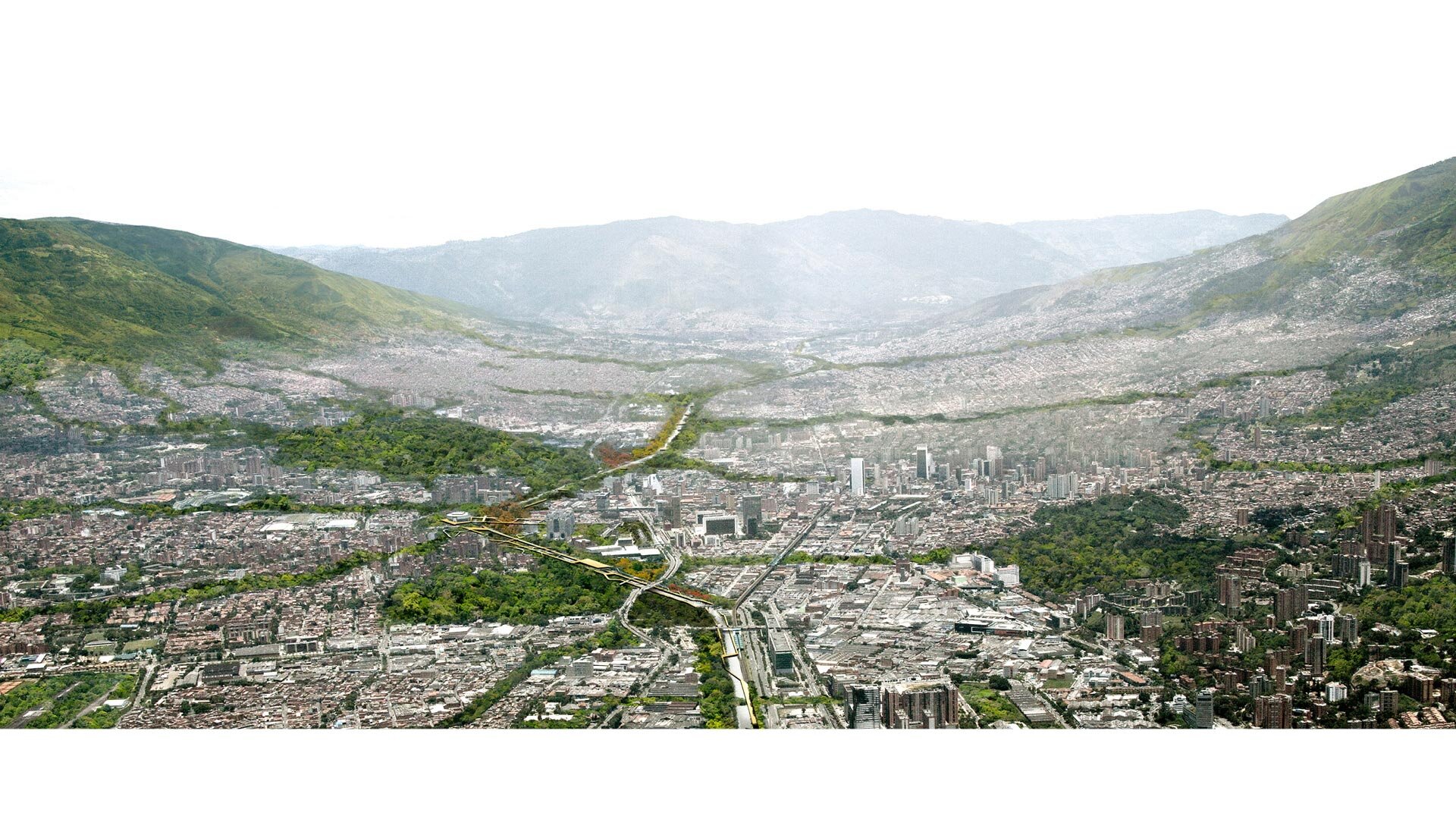
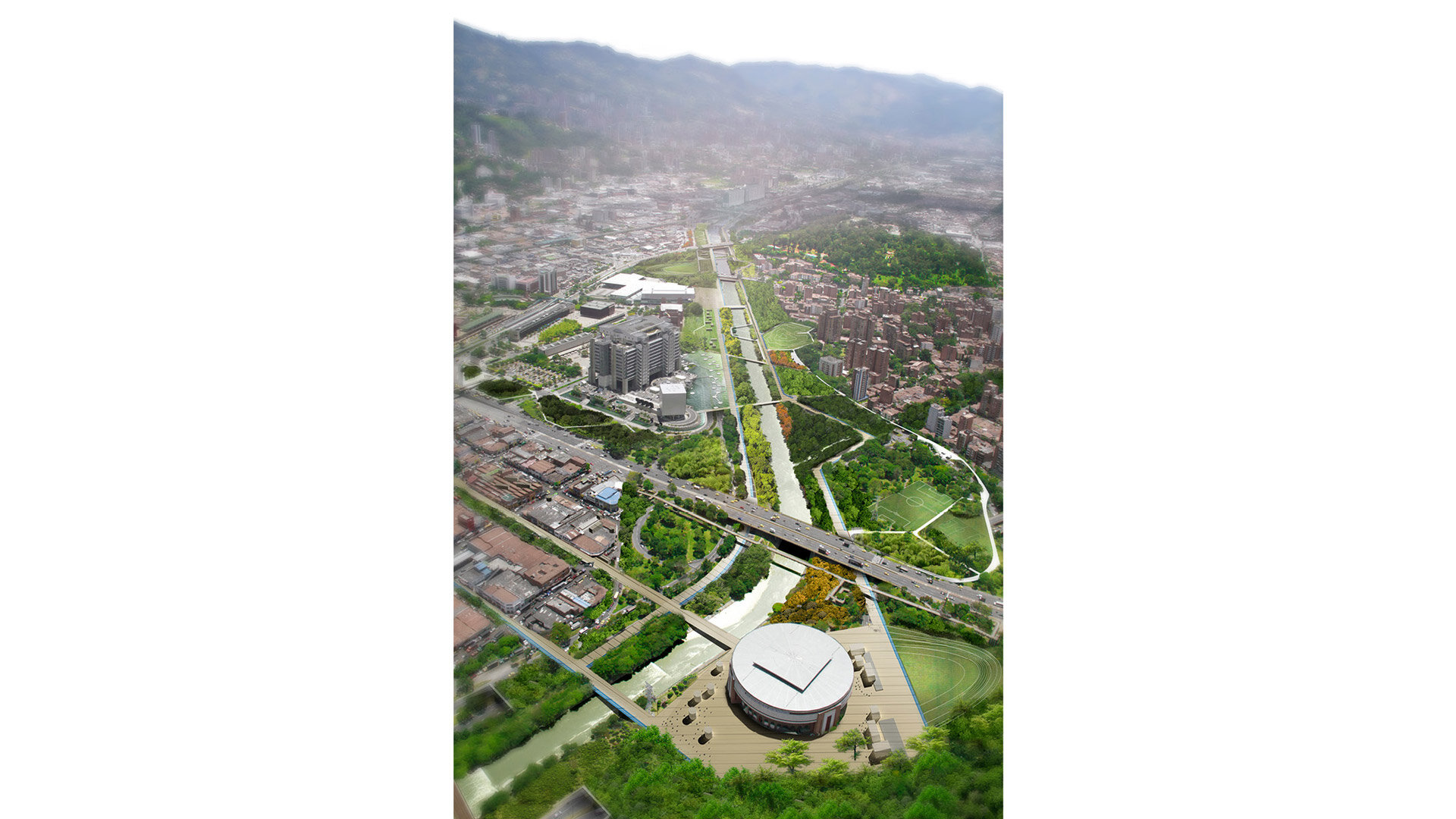
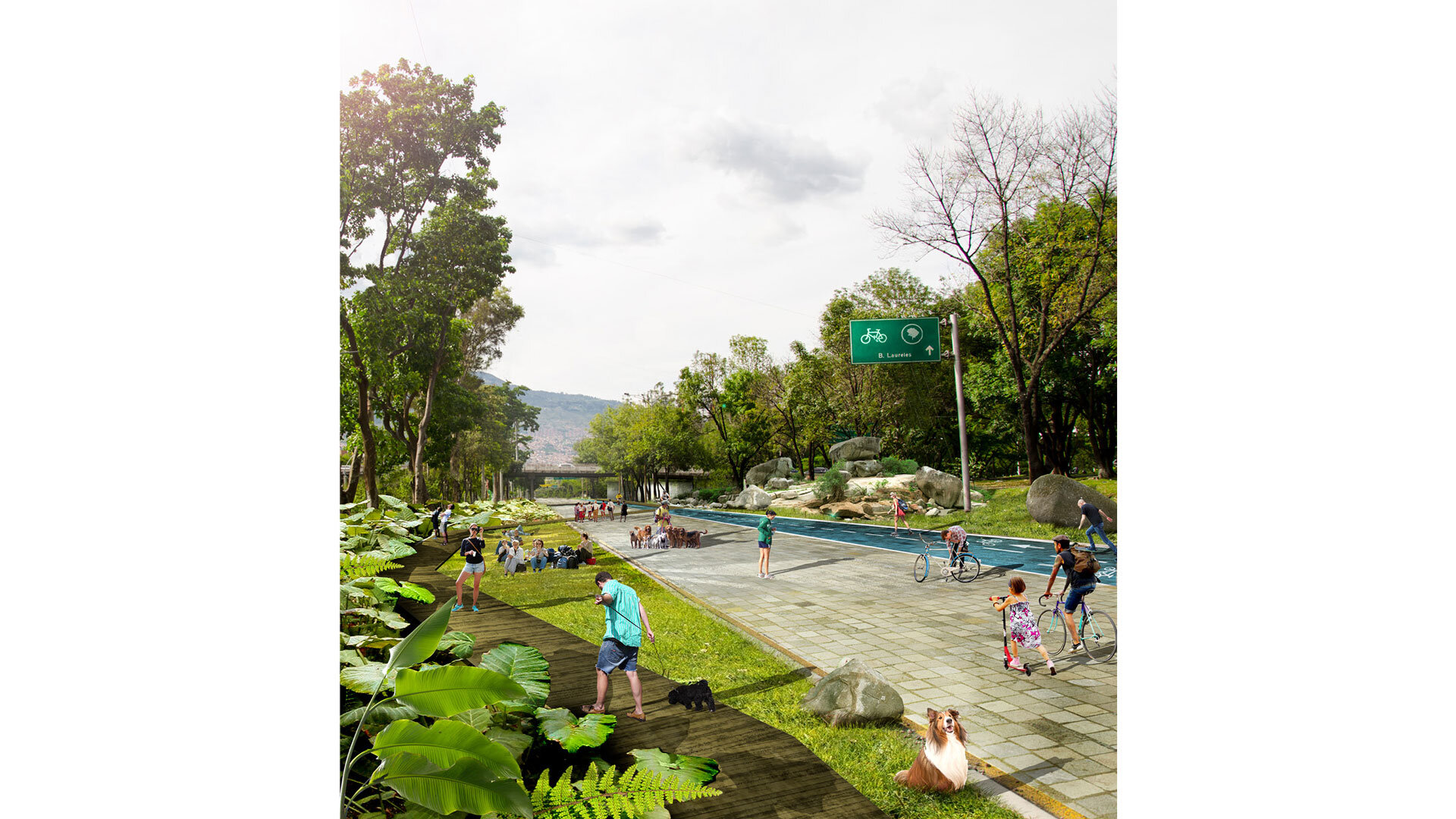
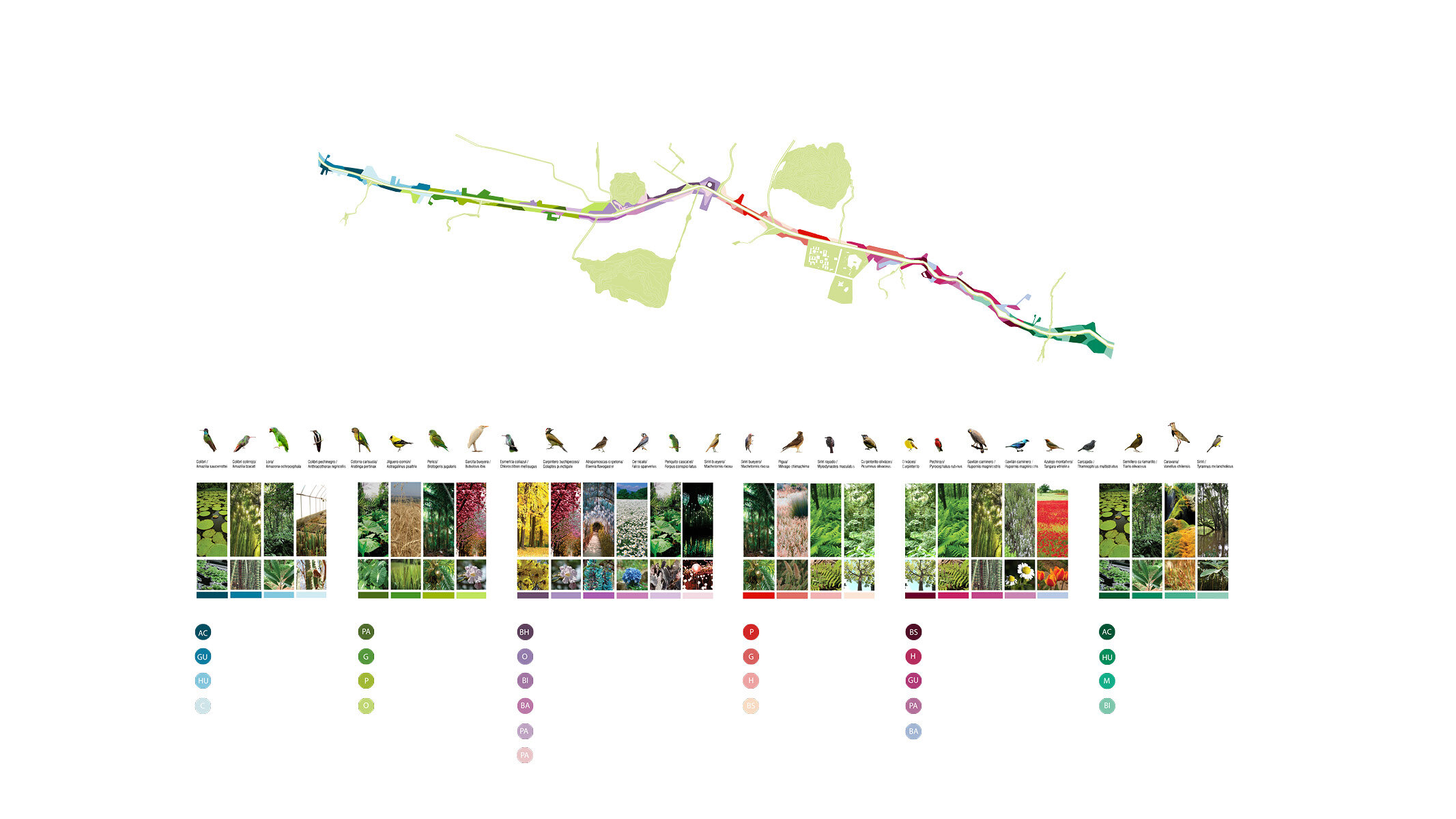
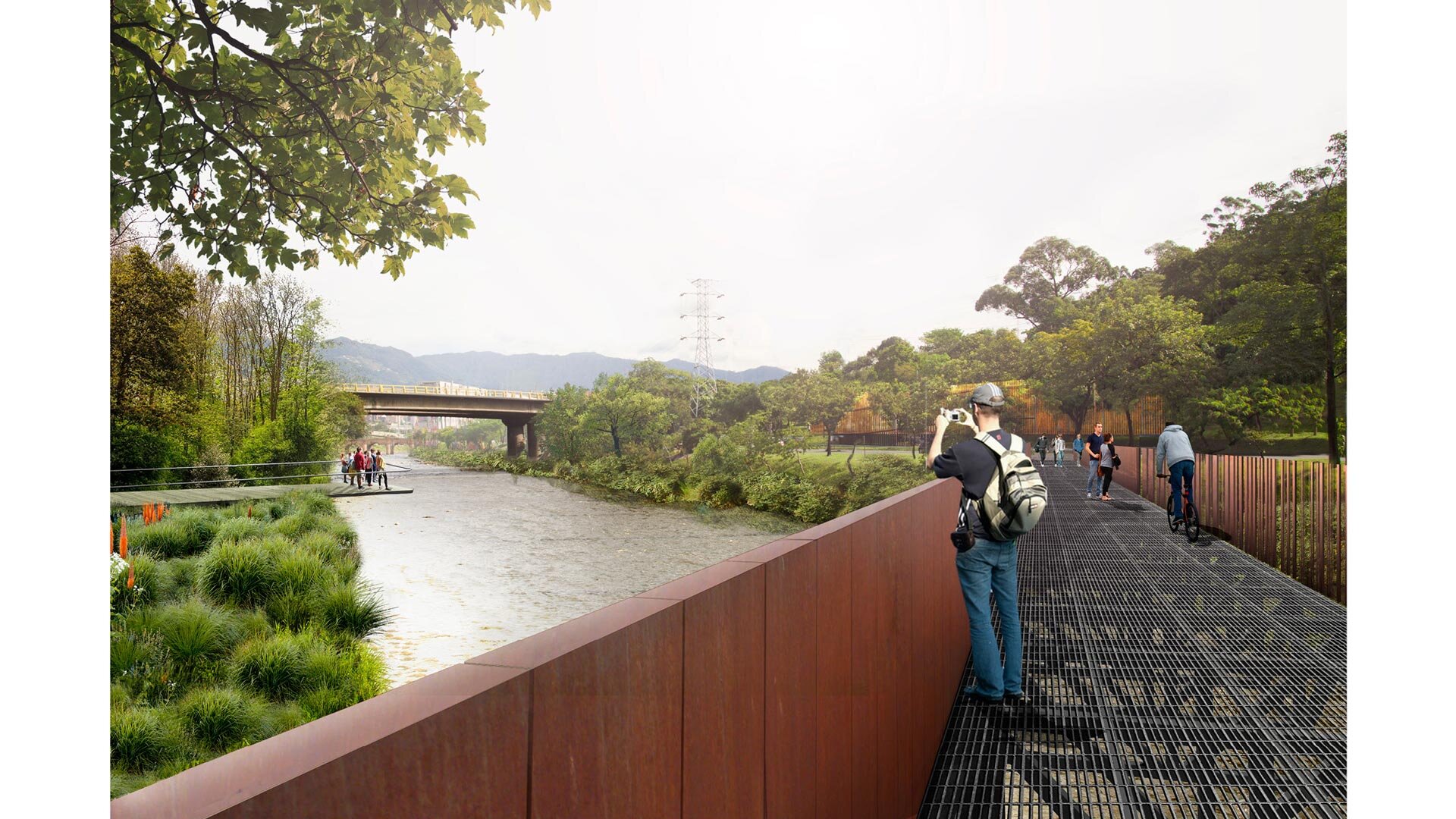
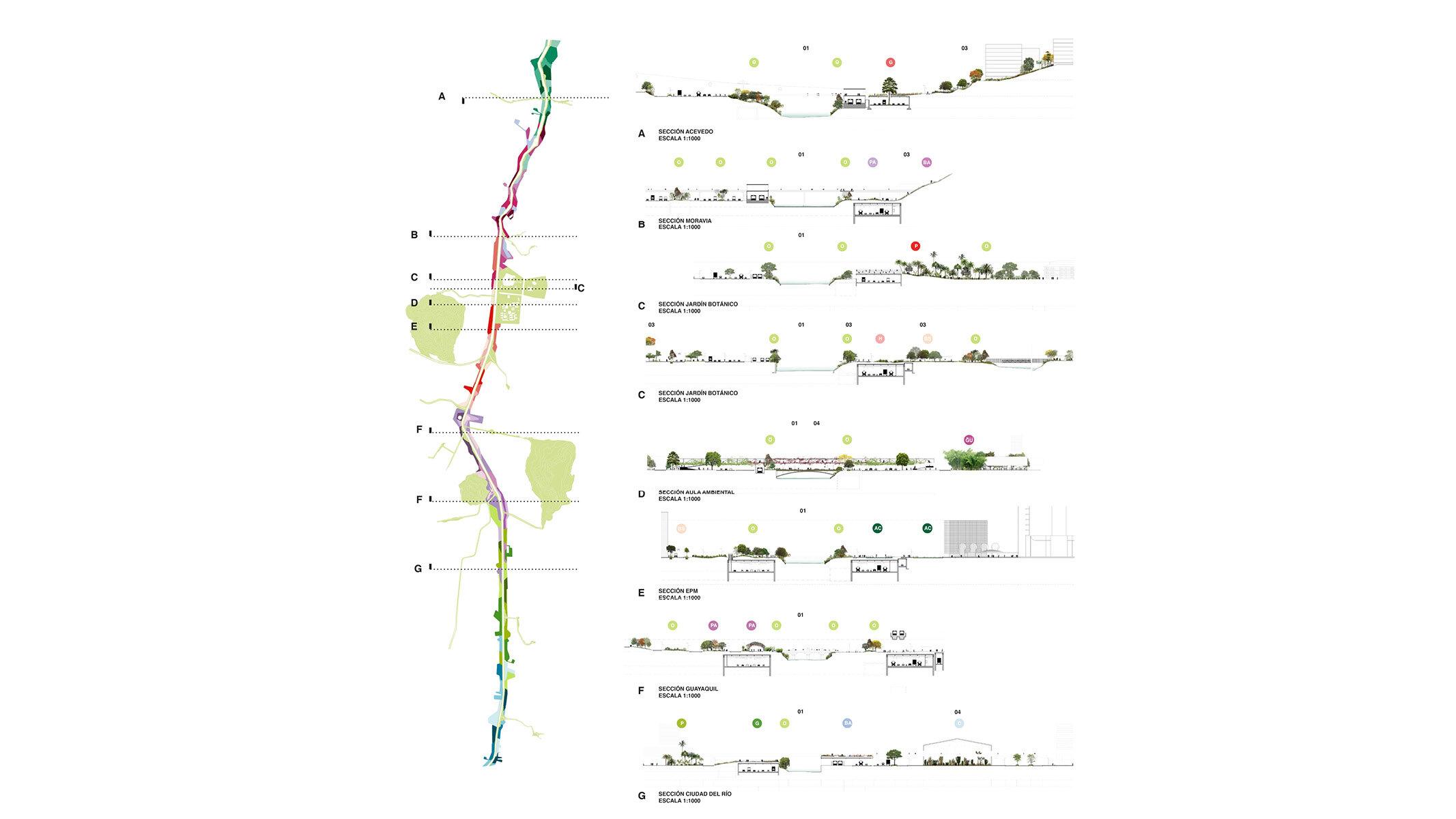
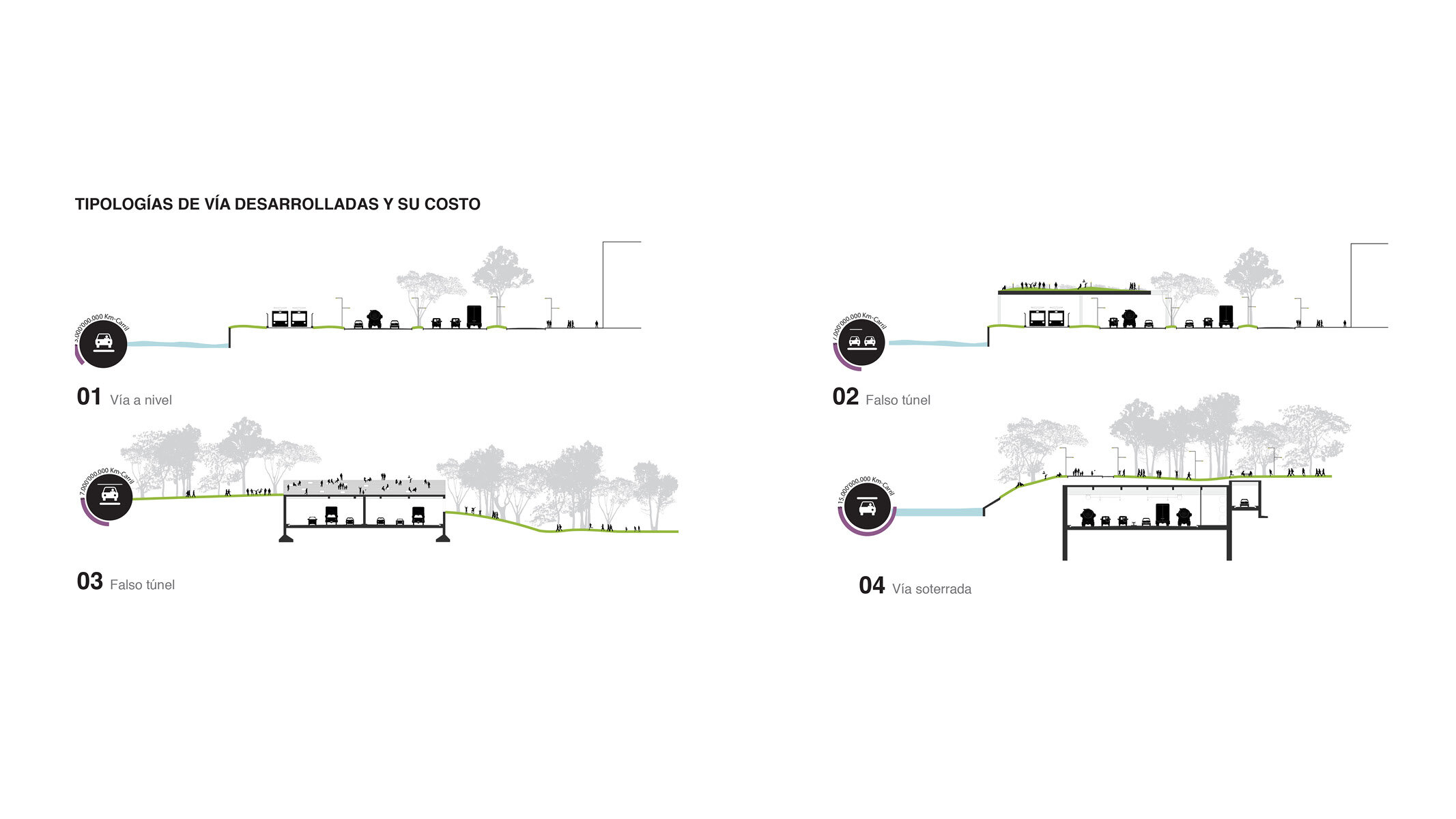
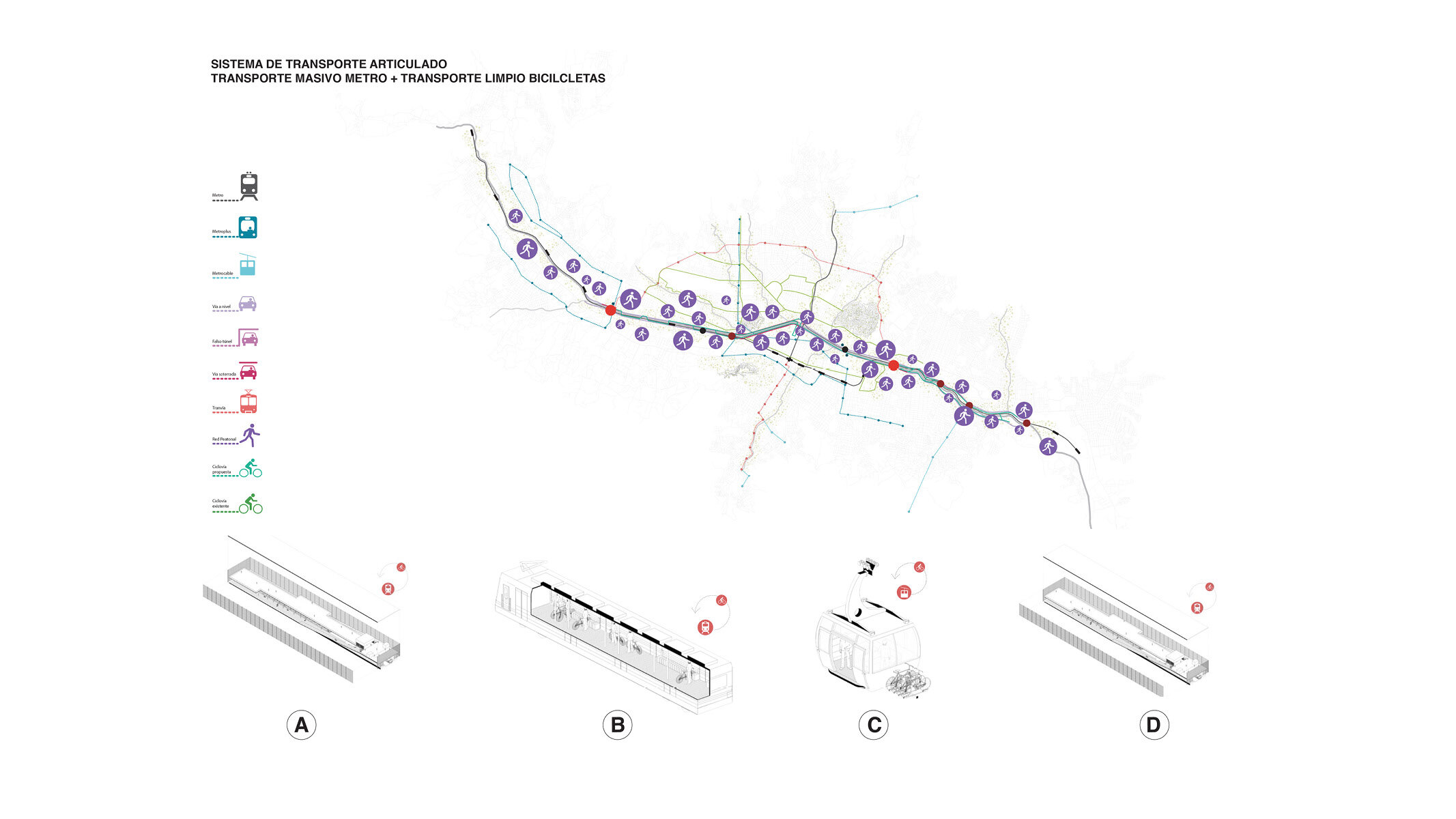
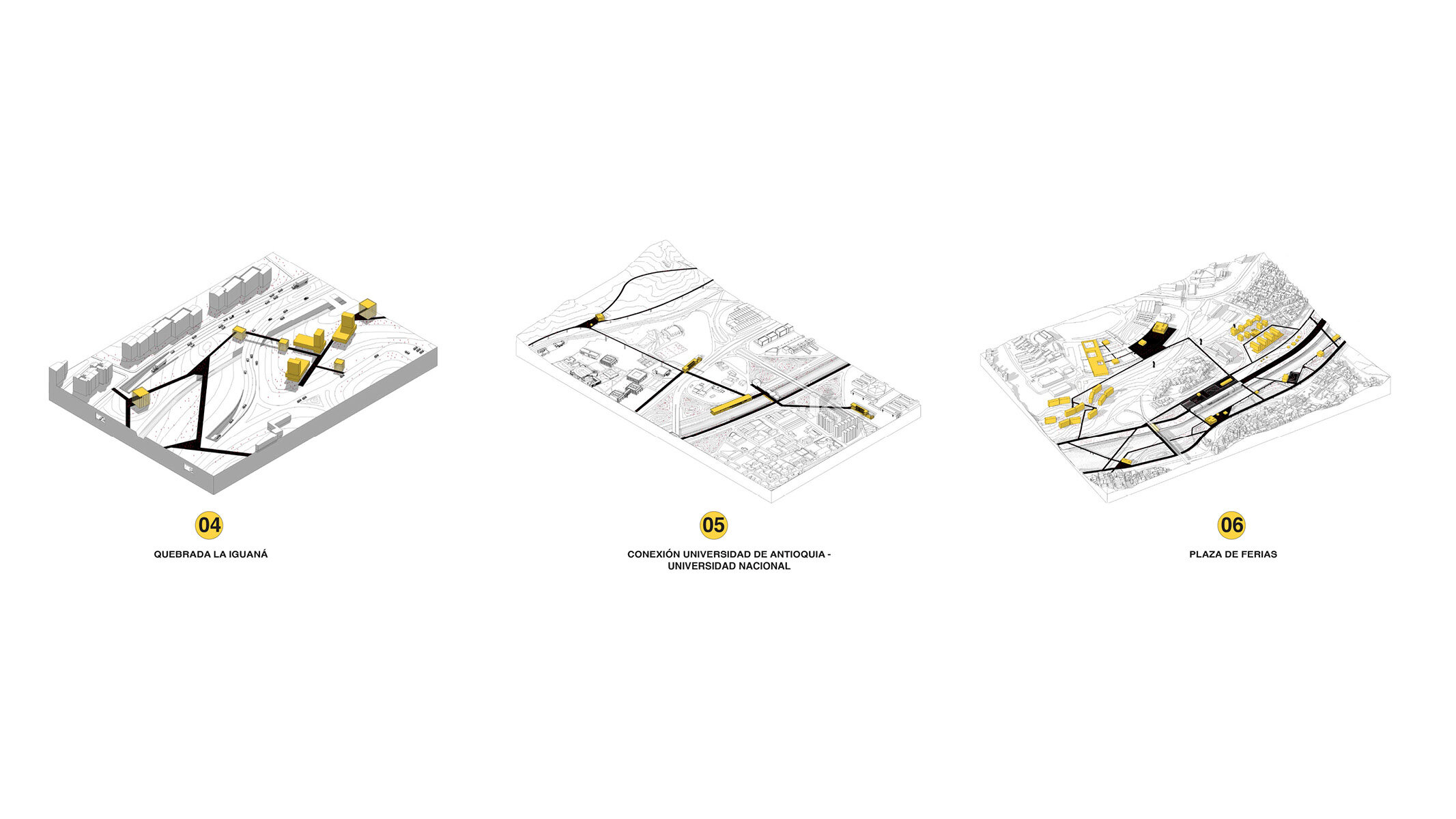
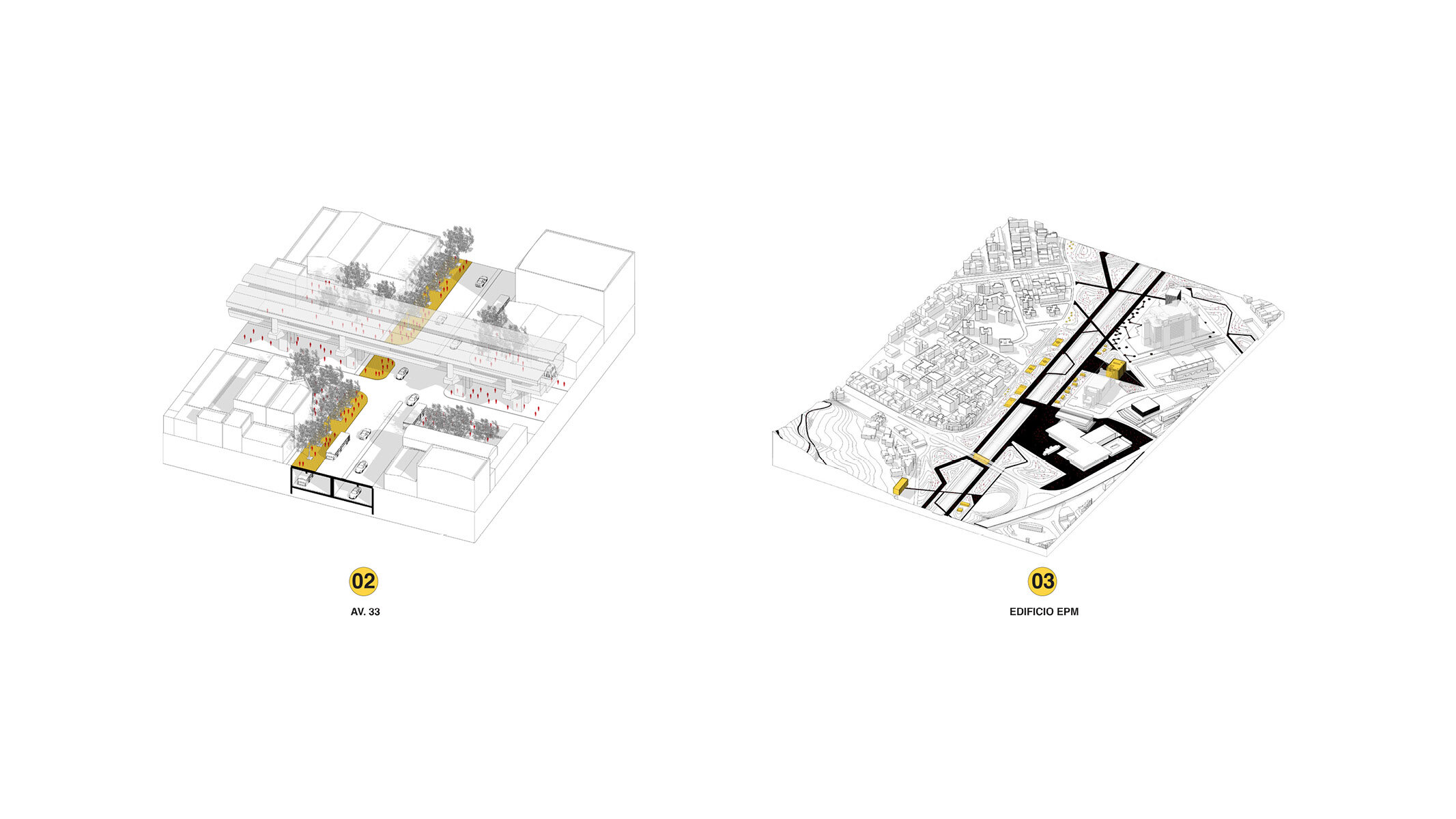
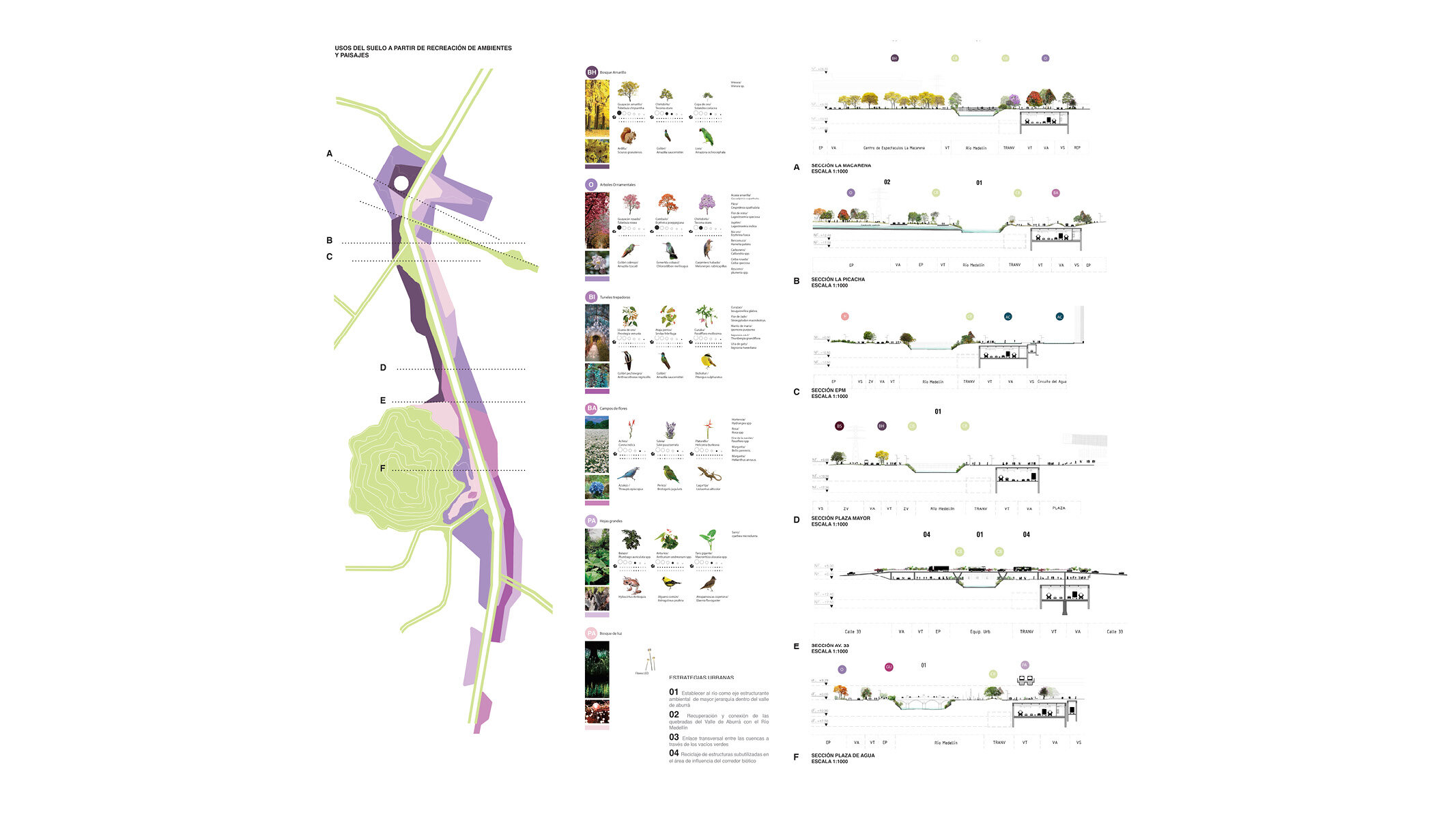
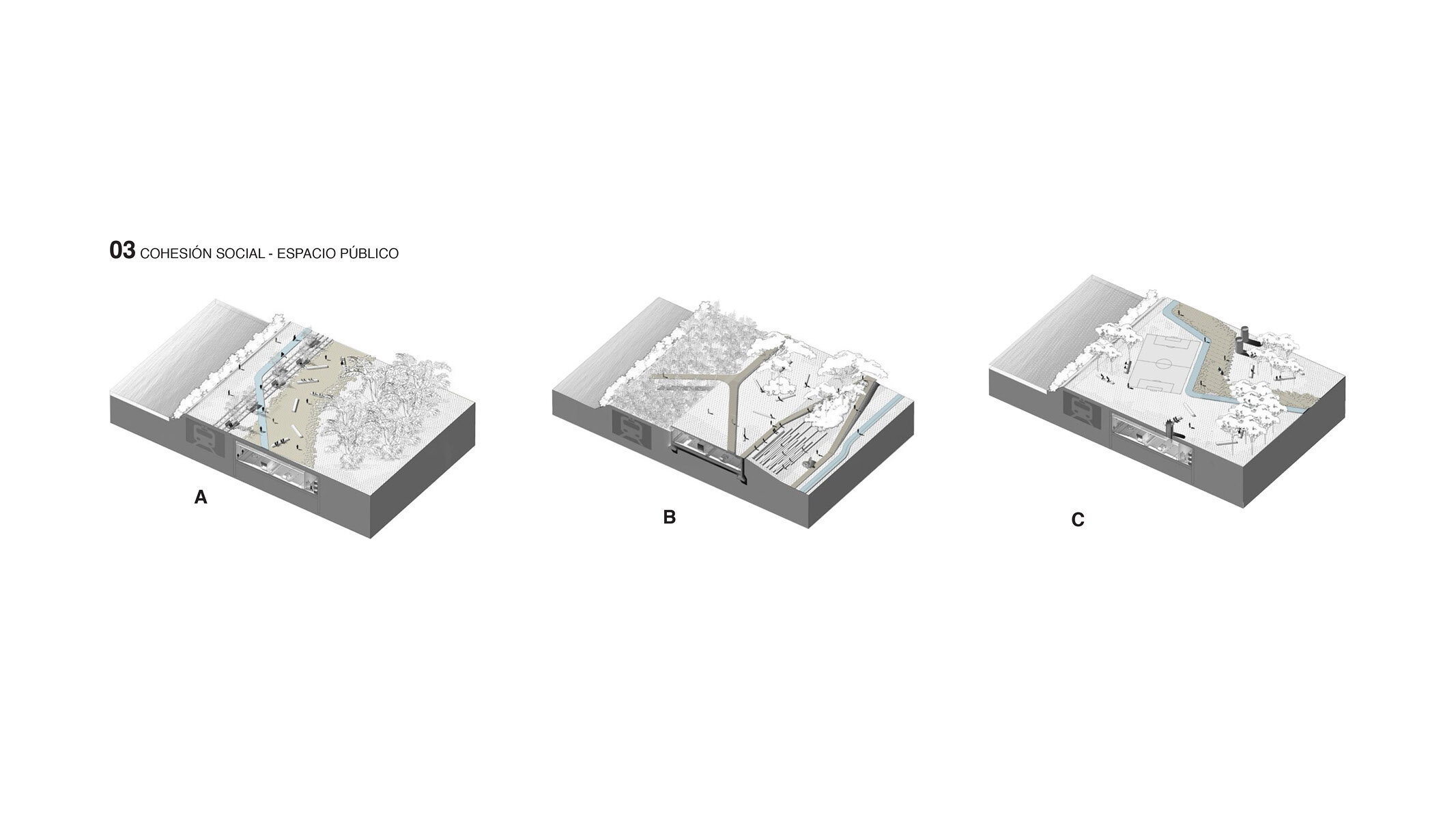
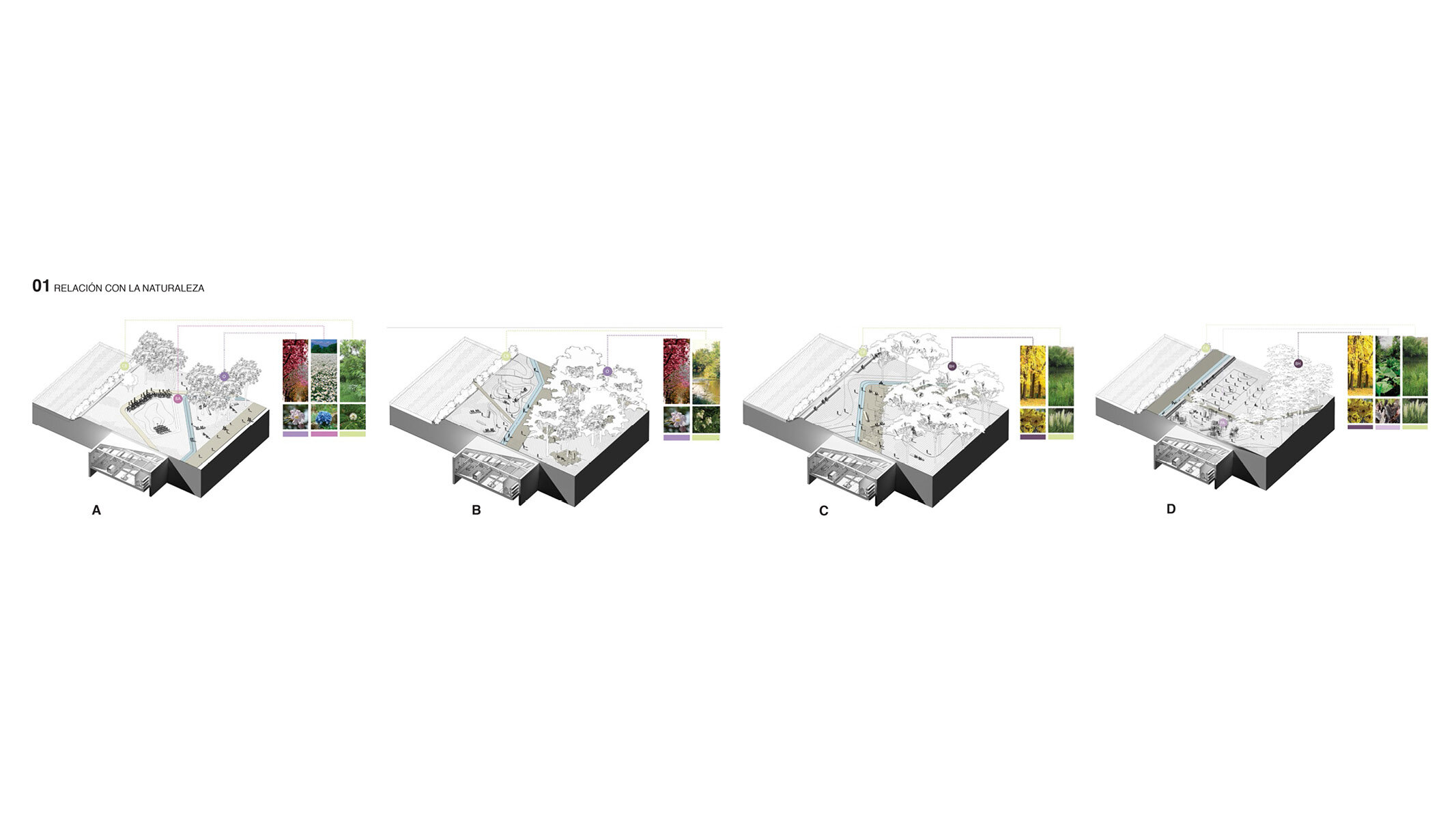

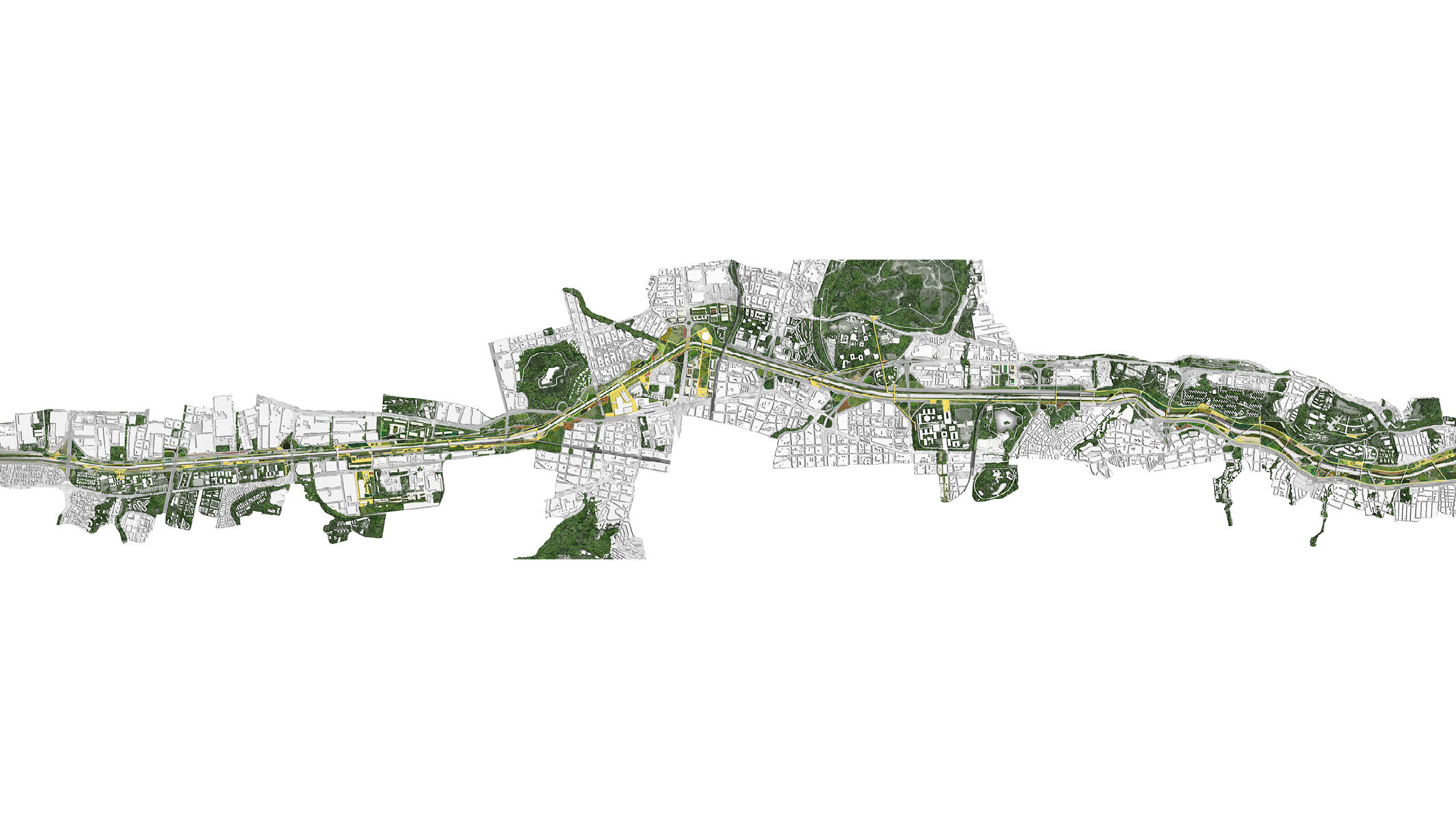

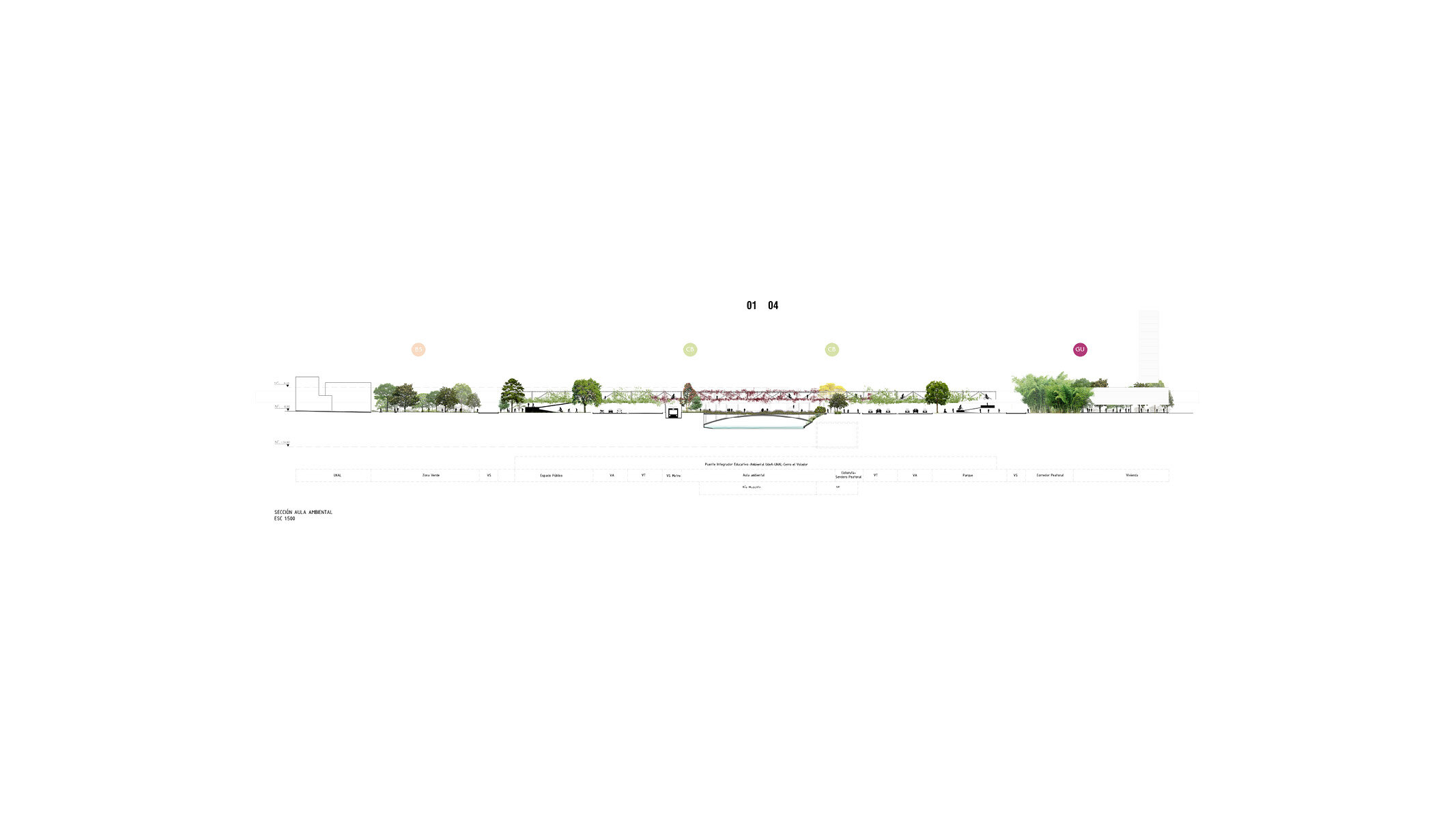
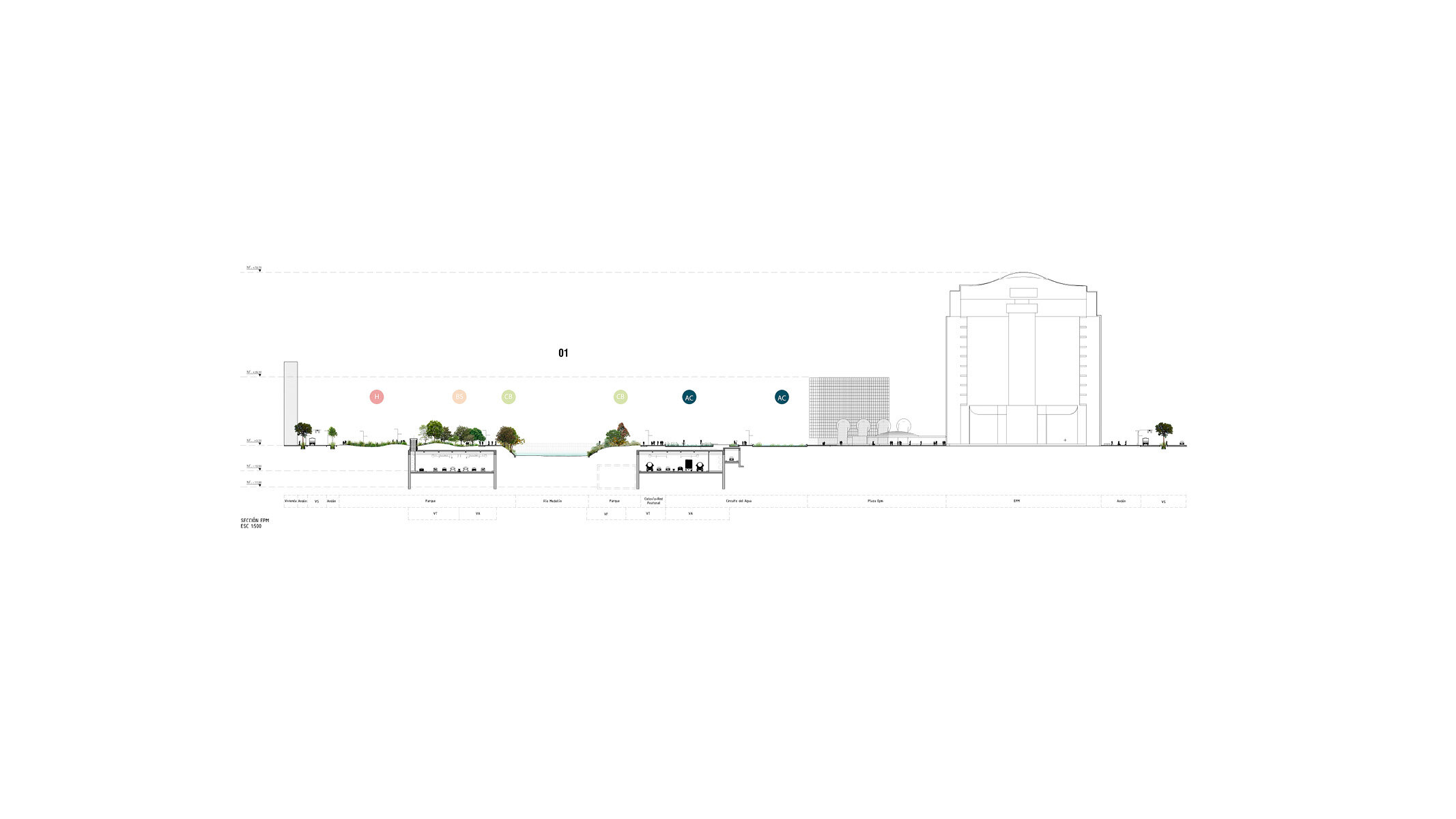
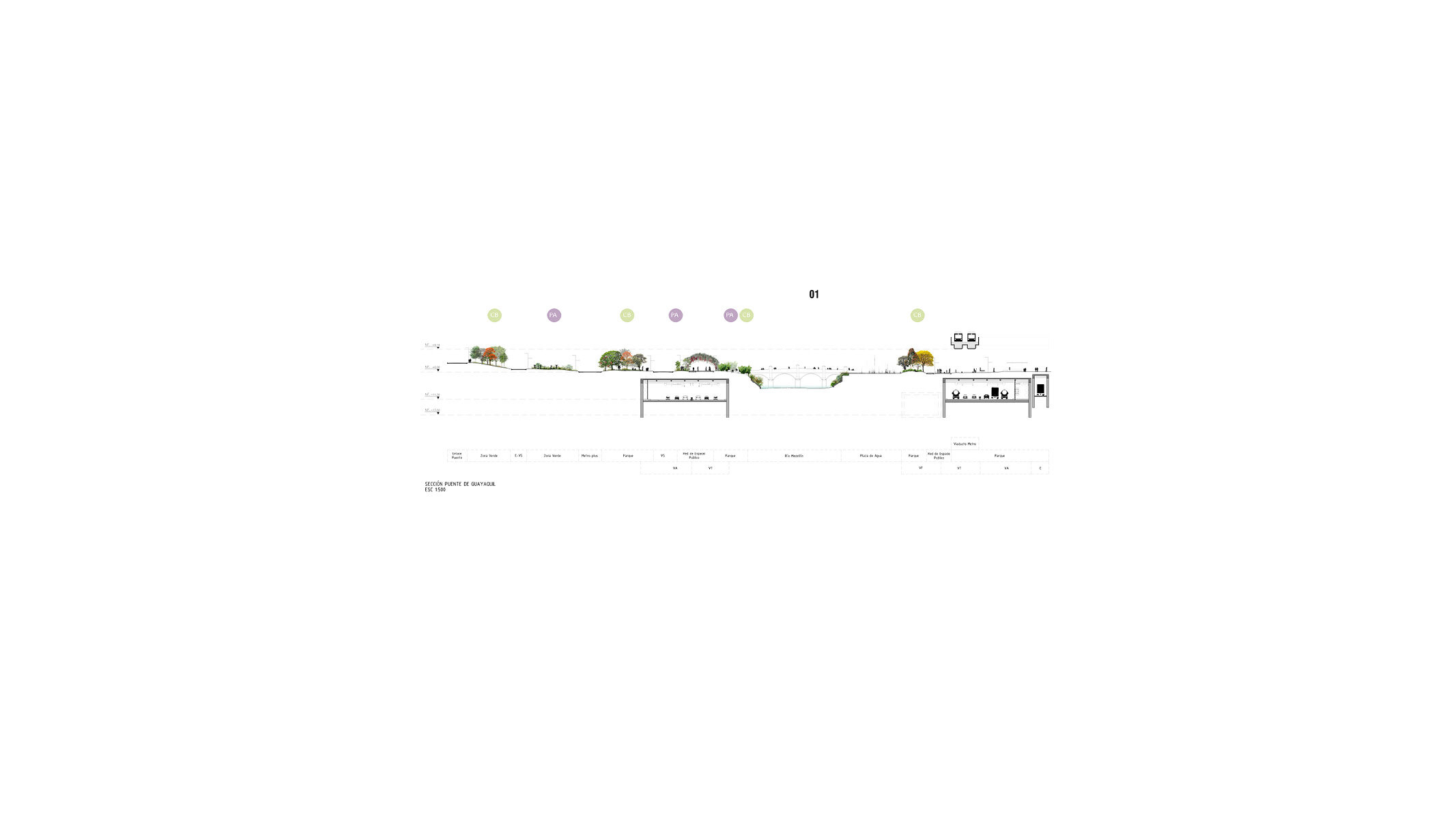
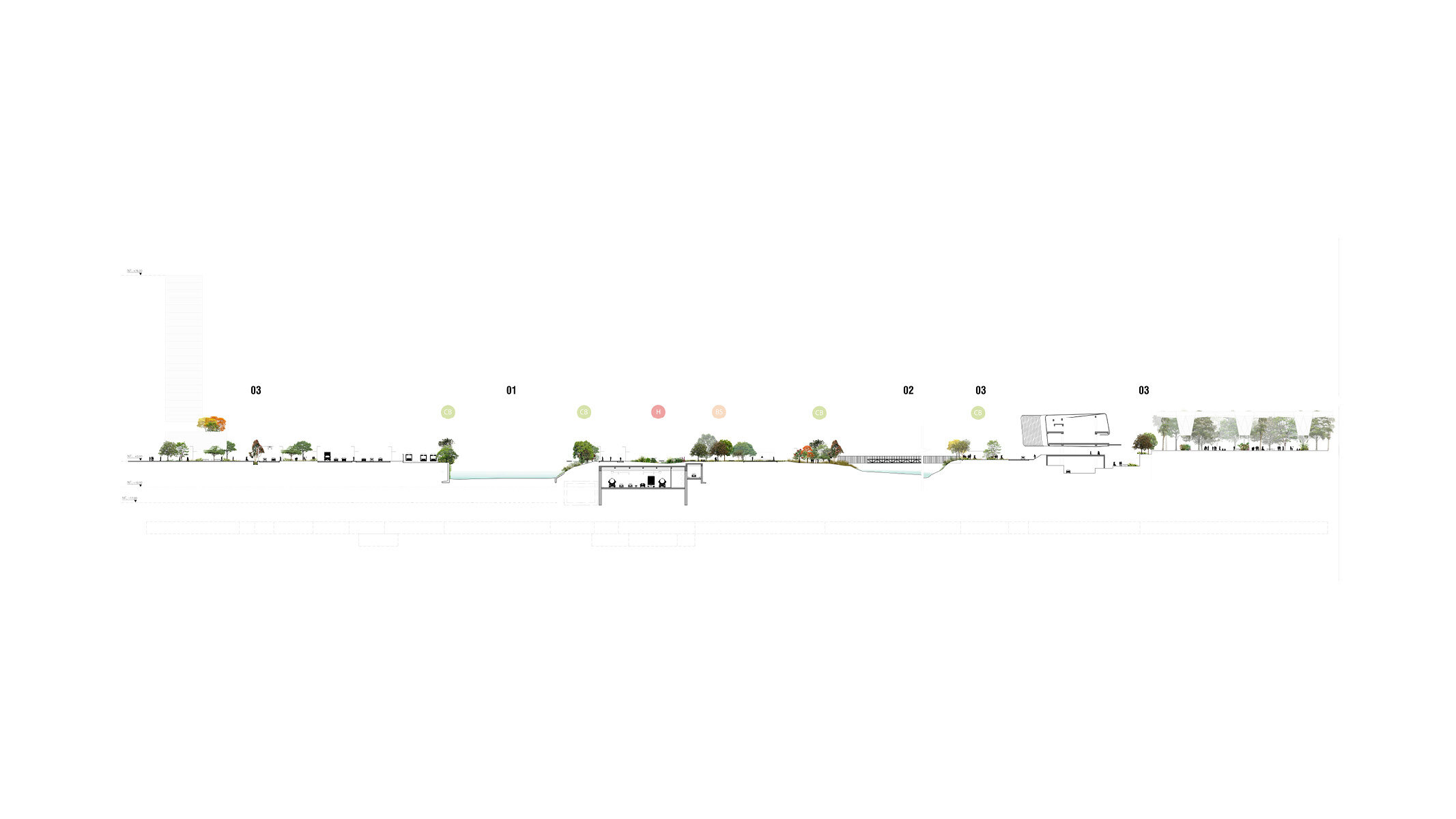
Descripción / ES
Parques de Río Medellín surge como proyecto insignia de la alcaldía de Aníbal Gaviria (2012-2015) como respuesta a la problemática existente del río, que atravesando la ciudad se encuentra desligado de las dinámicas urbanas y sociales por la avenida regional y autopista sur, vías nacionales que recorren el valle paralelas al canal del río. Buscando ser el elemento que teje la ciudad tanto longitudinal como transversalmente, el proyecto propone re-conceptualizar el uso del borde del río y revitalizarlo a partir de su transformación como jerarquía ambiental, cultural, educativa, deportiva y de movilidad.
El objetivo general de Parques del Río Medellín es generar un eje público y ambiental para la integración del corredor del río Medellín con la actividad urbana y los sistemas estructurantes de Medellín y del Área Metropolitana del Valle de Aburrá a través de un parque urbano compuesto de espacios públicos de calidad. El proyecto nace de la necesidad de un mejoramiento de la movilidad metropolitana que a partir del aprovechamiento eficiente de los suelos de oportunidad, las infraestructuras, las zonas verdes y el espacio público aledaño permite implantar usos más adecuados y consecuentes con el medio ambiente, el paisaje, la cultura y la estructura urbana existente.
Description / EN
This project was born from a need of infrastructure improvement to the national highway that goes through the city, parallel to the river. The local administration saw the project as an opportunity to think beyond engineering and conduct a public competition where the main focus was to combine the highway with public space through the recovery of the city’s waterfront, an idea that had been in the making for 50 years.
In the 50’s Medellin’s river was rectified and canalized so it could allow the development of the city, eliminating flood areas and establishing a national mobility corridor along its banks. This caused a division in the city, where 1,2 m people live on the east side of the river and 1,2 m live on the west side. The connections between both sides are exclusively for cars and buses, the city does not have any working pedestrian bridges on ground level that allow transversal communication between both banks. Asthe main focus of former mayor Anibal gaviria (2012-2015), the project aims at establishing transversal pathways through the development of quality public spaces that recover the citizen’s idea of the River beyond a mobility corridor or forgotten place, and acknowledge its natural and environmental importance.
